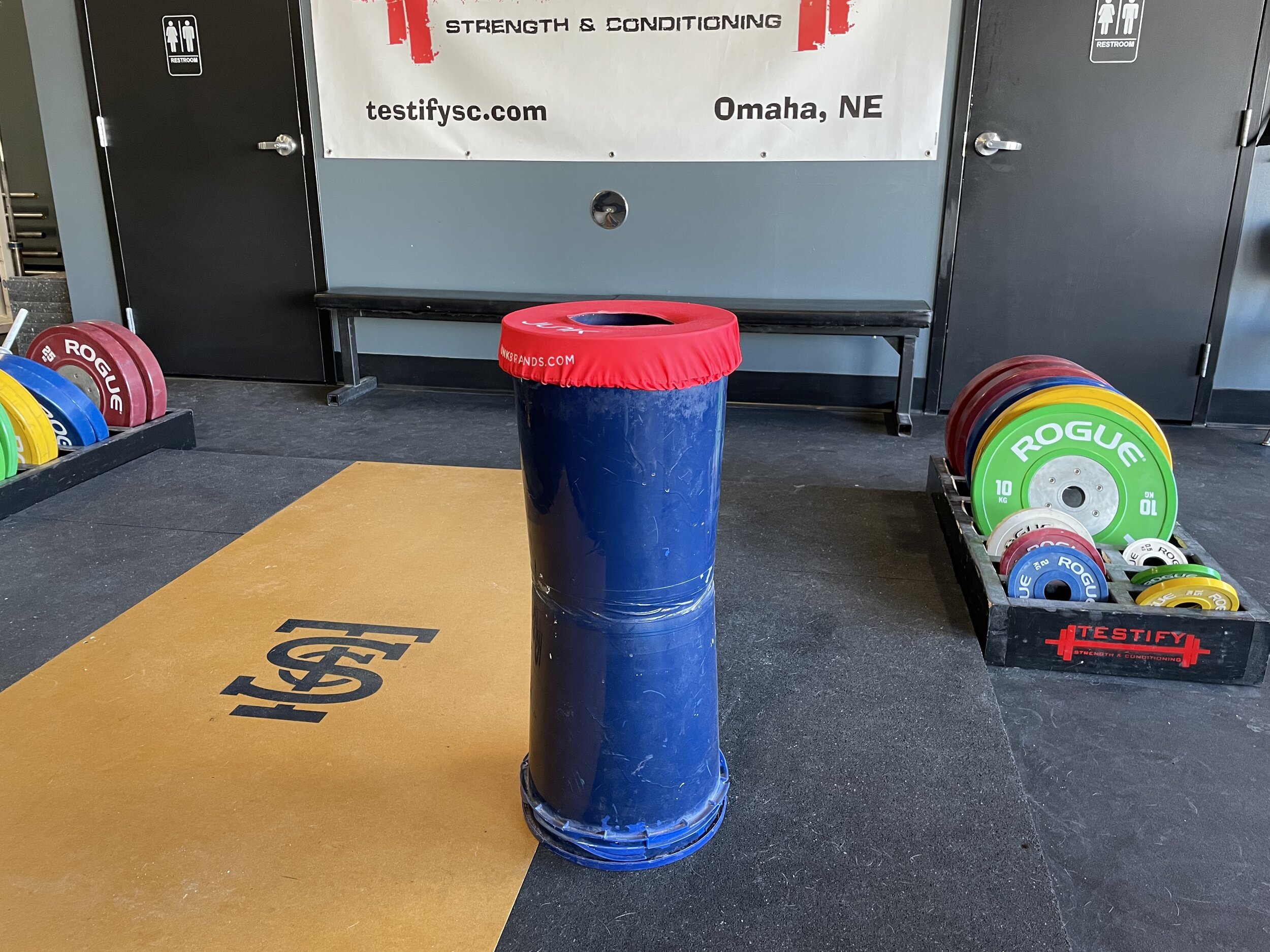In short, they key here is to not put the first plate on the end of the bar, but rather put the end of the bar through the first plate.
Tip #3: Putting the Next Plate on the Bar
The second plate (i.e., the first plate on the opposite end of the bar) should be the only one that even potentially poses a problem, and we’re going to solve that right now.
With the plate standing vertically (after rolling it over, of course), raise the end of the bar to the height of the plate’s hole. Then, you have two options:








